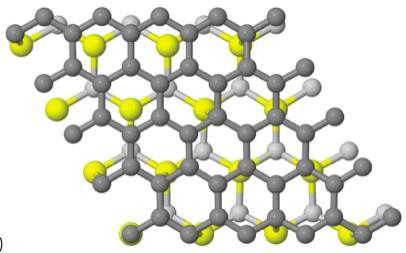 First-principles study of hydrogen and fluorine intercalation into graphene-SiC(0001) interface
First-principles study of hydrogen and fluorine intercalation into graphene-SiC(0001) interface
The properties of epitaxial graphene on SiC substrates can be modified by intercalation of different atomic species. In thiswork, mechanisms of hydrogen intercalation into the graphene–SiC(0001) interface, and properties of hydrogen and fluorine intercalated structures have been studied with the use of density functional theory. Our calculations show that the intercalation of hydrogen and fluorine into the interface is energetically favorable. Energy barriers for diffusion of atomic and molecular hydrogen through the interface graphene layer with no defects and graphene layers containing Stone-Wales defect or two- and four-vacancy clusters have been calculated. It is argued that diffusion of hydrogen towards the SiC surface occurs through the hollow defects in the interface graphene layer. It is further shown that hydrogen easily migrates between the graphene layer and the SiC substrate and passivates the surface Si bonds, thus causing the graphene layer decoupling. According to the band structure calculations the graphene layer decoupled from the SiC(0001) surface by hydrogen intercalation is undoped, while that obtained by the fluorine intercalation is p-type doped.
Go back